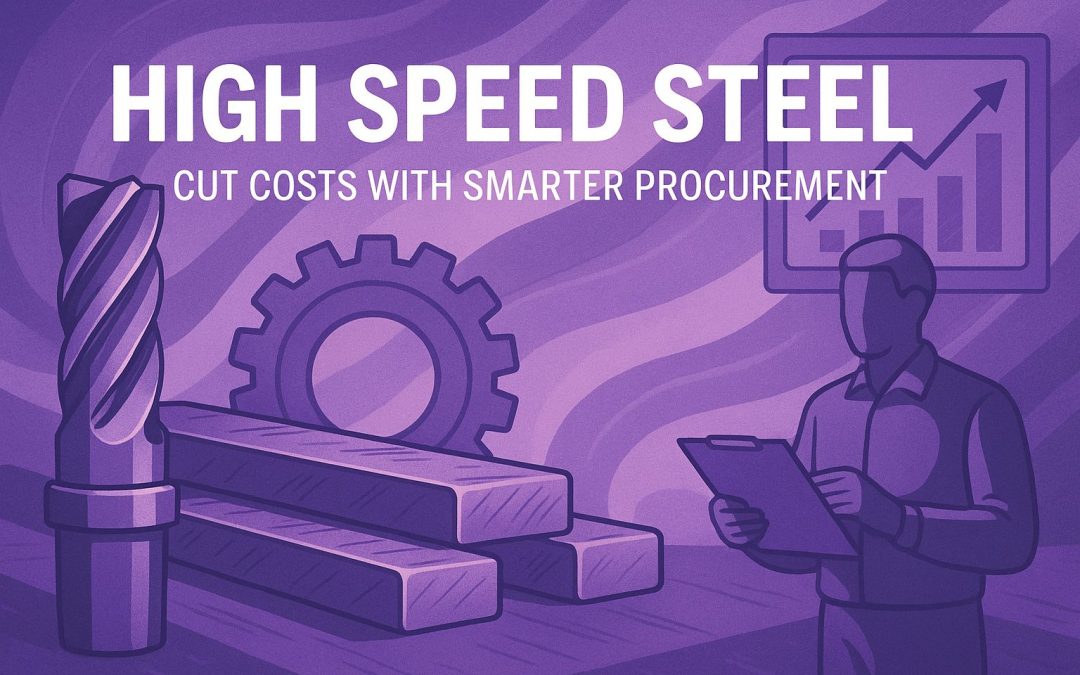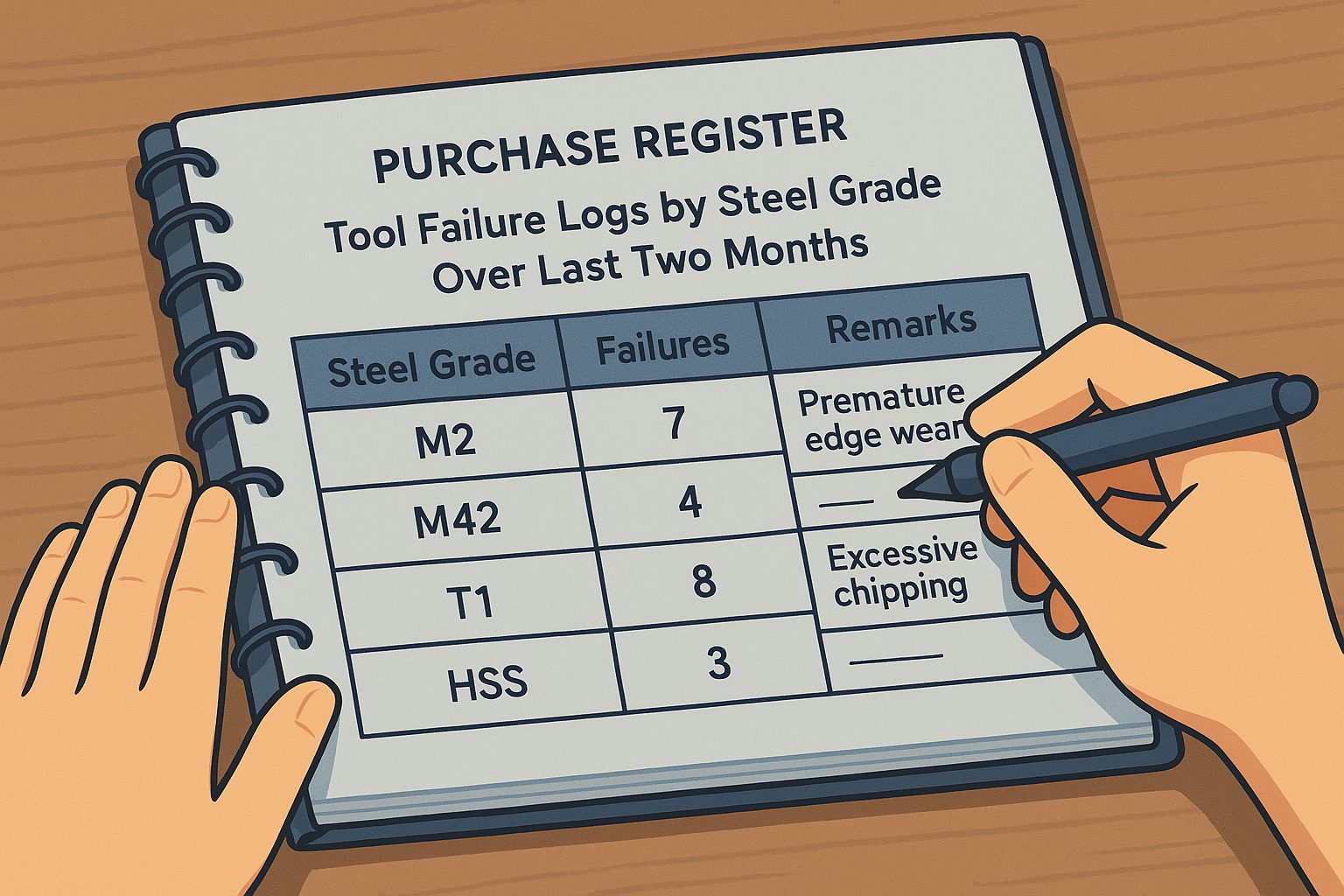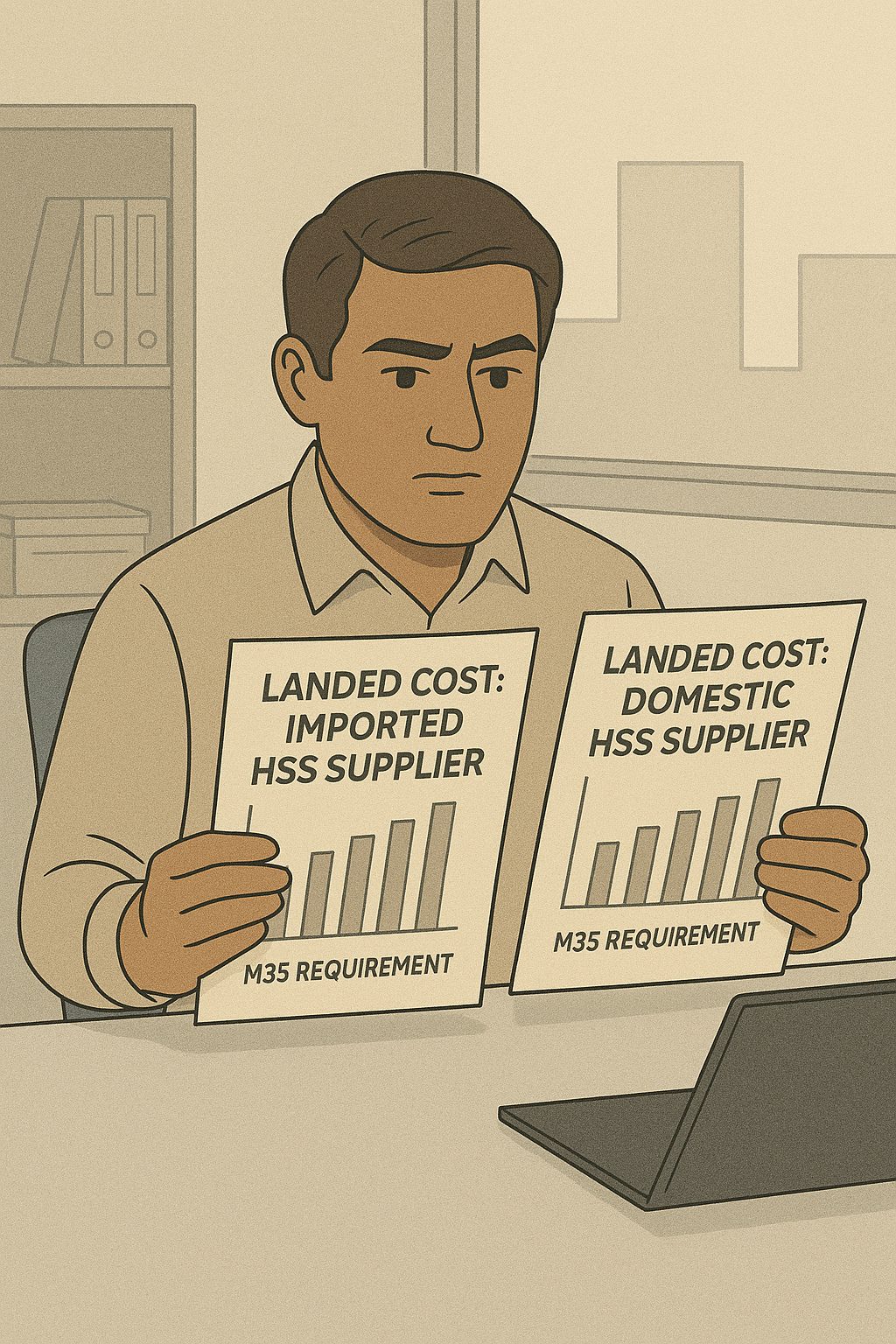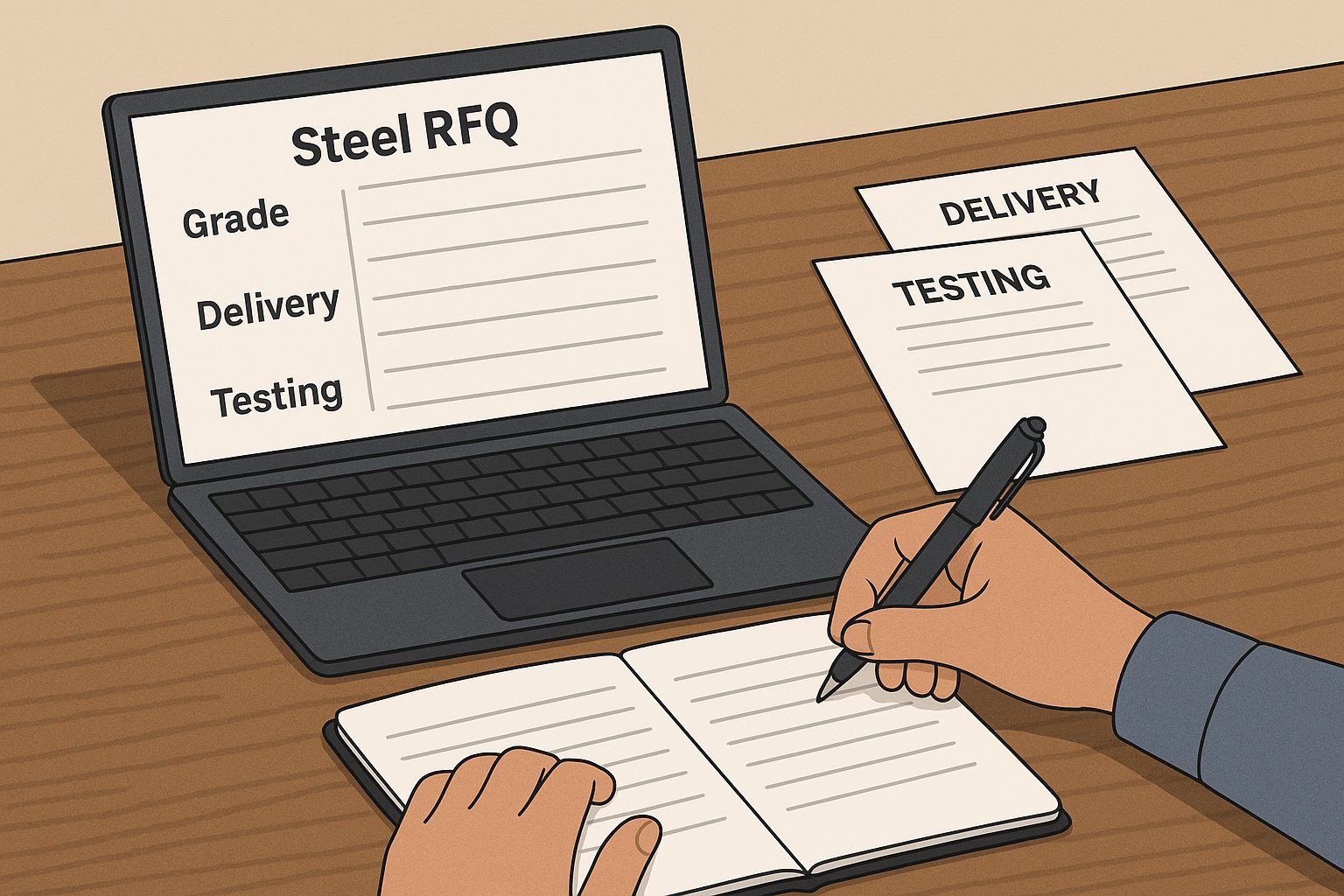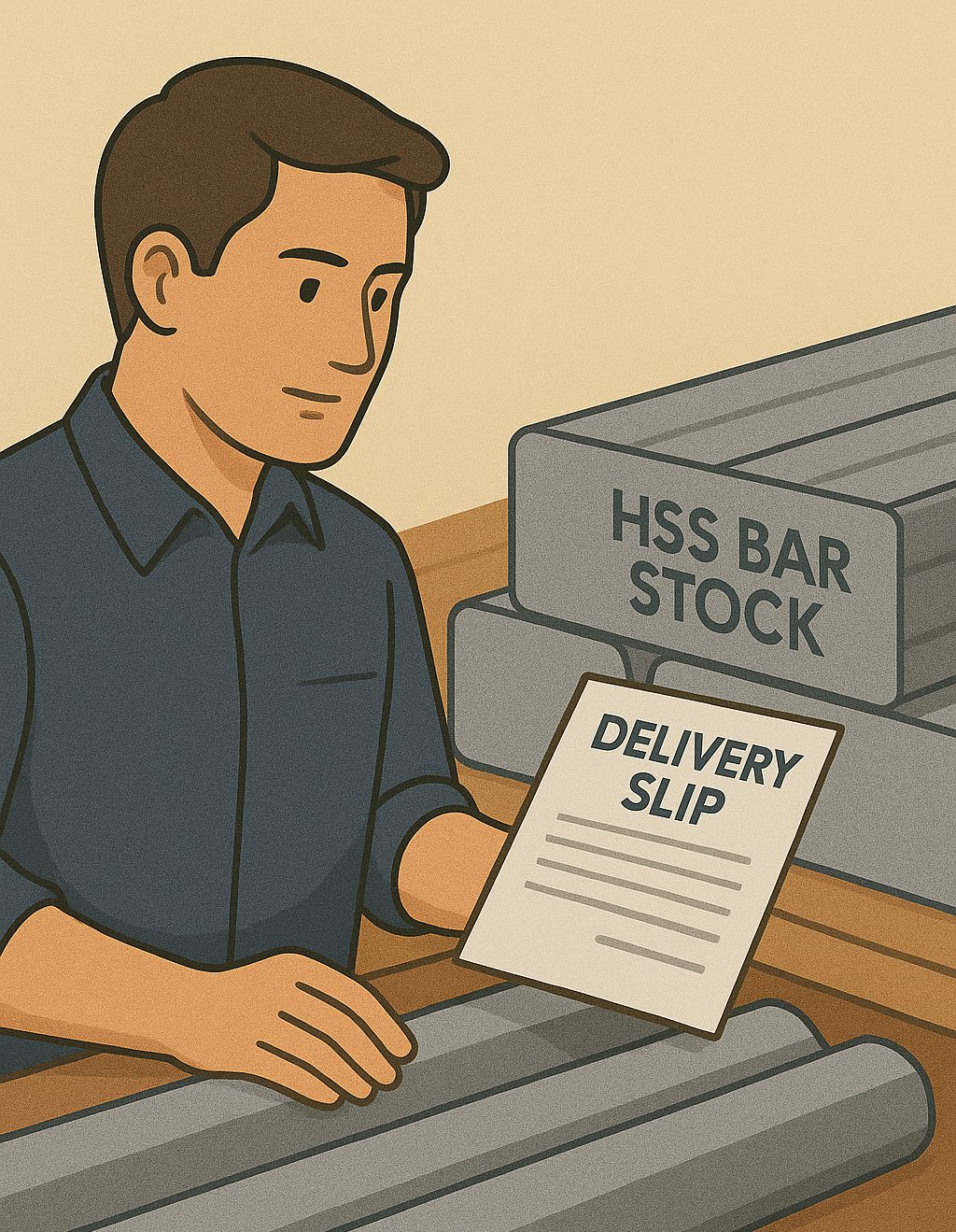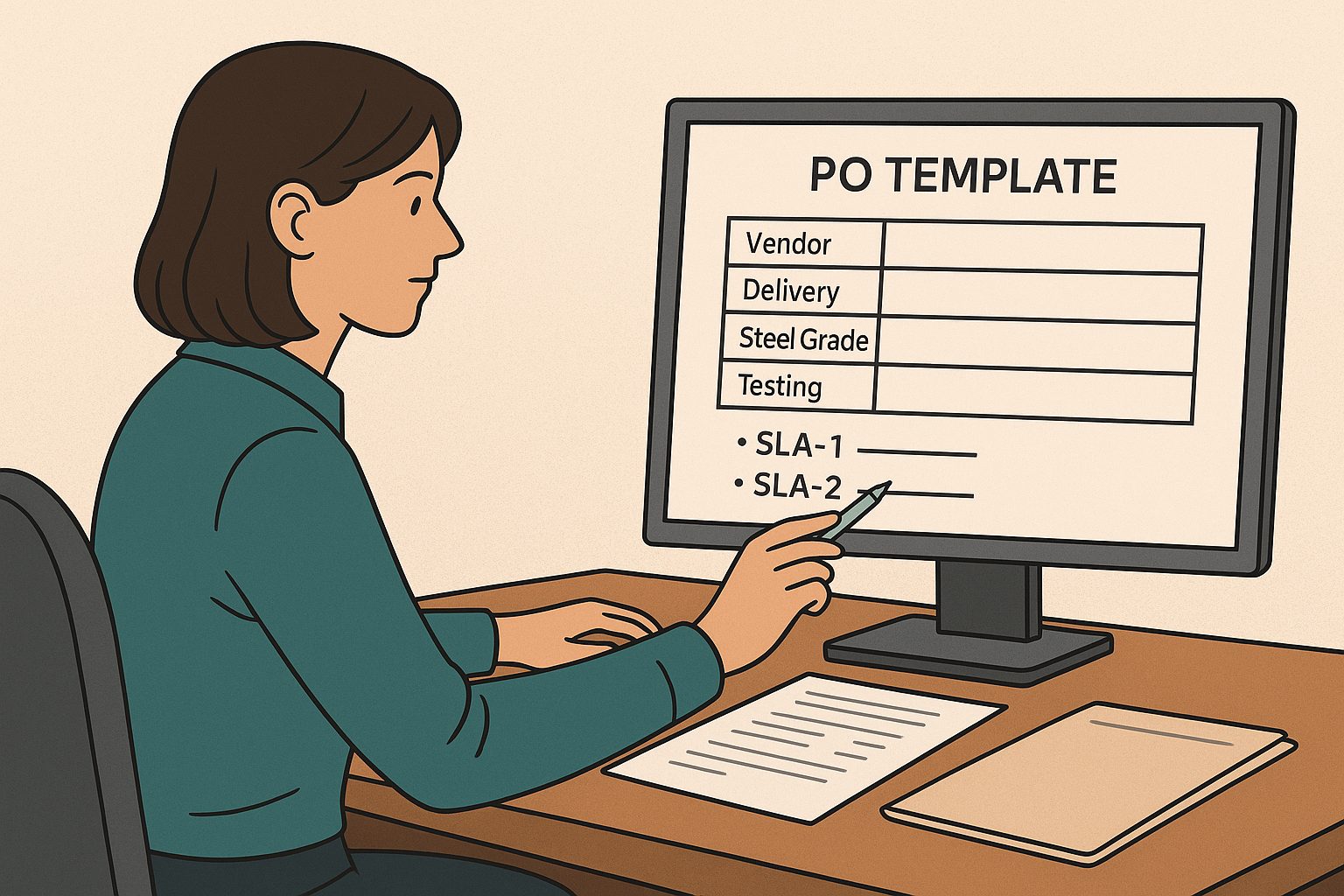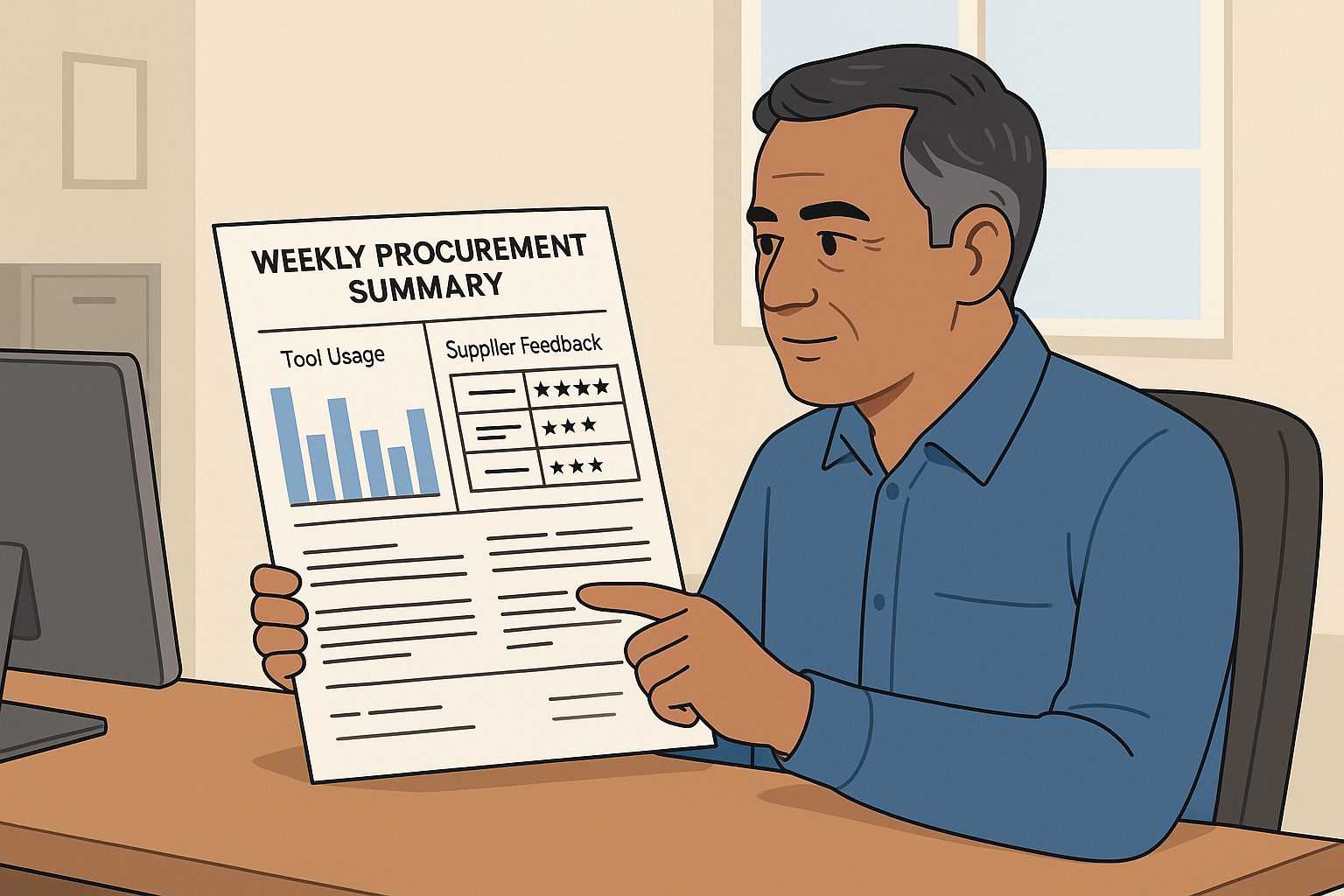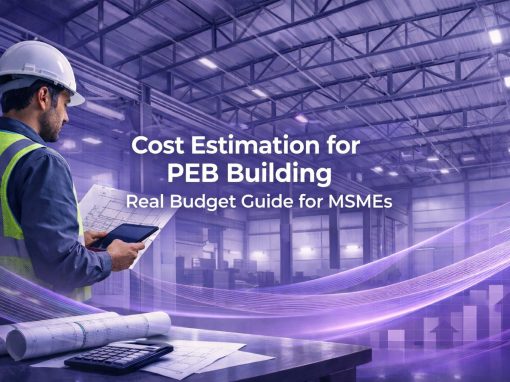Table of Contents
Most workshops rely on high speed steel, but very few stop to evaluate what grade they’re actually using. It’s often just “what’s in stock” or “what’s worked so far.” That may be fine for routine jobs, but not when you’re chasing lower tool costs or trying to reduce downtime.
M2 is the most common. It’s dependable for regular cutting work; mild steel, cast iron, softer materials. It gives decent tool life. But once you’re running tougher jobs, like tool steel or higher-speed cuts, M2 starts wearing out too quickly. That’s where M35 or M42 come in. These have cobalt in them, which helps with heat and wear, especially if the job runs for long hours.
The problem is, these better grades cost more. So if you’re using M42 everywhere, it eats up margin. But if you don’t use it where it’s needed, tools fail mid-job. That’s worse. Most MSMEs don’t have a system to track this. They just reorder what broke, or what the vendor suggests. That’s not a strategy, it’s reaction.
It helps to split tooling into two groups. Standard tools that run on M2. And a second set for critical parts? Use M35 or M42 there. This way, you keep stock simple and avoid overspending. Even basic records on tool wear can help the purchase team make better calls.
Building a Vendor Evaluation Framework
Most small teams don’t track suppliers formally. One person knows a guy, they order from him. Been doing that for a while. Until a batch comes in late or the invoice doesn’t match the spec sheet. Then suddenly, it’s a fire drill.
Price is only one part. If a vendor delays dispatch or doesn’t have BIS-ready documents, you’re stuck. You can’t process GRNs, can’t claim GST, and sometimes even the bank flags the payment. Not because the steel is bad, but the paperwork doesn’t line up.
You need some way to grade vendors. Doesn’t have to be a fancy matrix. Even 1 to 5 for price stability, delivery history, and response time is enough. Who sends test reports on time? Who slips during urgent cycles? That’s what matters.
New suppliers especially. Most quotes look fine. Good rate, nice terms. But no one talks about what happens when the shipment’s 4 days late. Or the grade turns out wrong and the whole tool batch fails. If you don’t have feedback from other buyers, you’ll find out the hard way.
Someone in the team should do a basic reference call. Not just who the vendor tells you to call. Talk to people who actually buy from them regularly. Ask if they fix things when something goes off. If they go silent or dodge blame, you’ll end up taking the hit.
Also: mills, stockists, traders; don’t treat them the same. Mills have better traceability, traders have stock. Decide what you need, then lock the type. Switching midstream is risky.
Cost Planning: Choosing Between Domestic and Import Models
Steel buyers in small and mid-sized units often chase the lowest per-kg rate without checking the full cost structure. But with high speed steel, price tags don’t tell the whole story. Delivery delays, paperwork gaps, and vendor dependencies can quietly raise sourcing costs. What looks like a good deal on paper often turns out expensive in practice.
Imported Steel Sounds Cheaper, But It Rarely Is
On paper, imported high speed steel often looks more affordable. Lower base price, wide grade range, fast-moving inventory. But once duties, shipping charges, and BIS paperwork delays are added in, the cost gap usually vanishes. For small manufacturers, it can become more expensive overall, especially if customs clearance drags beyond two weeks.
There’s also the issue of documentation. Importers often skip proper mill test certificates or send partial files. If your bank or accounts team asks for backup during audits, and you can’t provide matching test data, it becomes a compliance risk.
When Domestic Mills Make More Sense
For MSMEs working on tight cycles or repeat orders, domestic mills give more control. You can talk directly to the mill rep, clarify grade specs, and get dispatch updates without chasing five layers. Many re-rollers also have local stock, so they can manage emergency runs better.
That said, not all domestic sources are equal. Some quote aggressively but cut corners on consistency. If the mill doesn’t stamp material clearly or splits a batch mid-way, your tool performance drops, even if the price was fair.
This is where some MSMEs get stuck. The steel works fine in the trial batch, but later shipments don’t match the original heat number. It breaks traceability, and no one takes ownership when there’s a failure.
What’s the Right Mix?
Many procurement teams now use tiered sourcing. Domestic mill for routine M2 or M35, things they use daily. Imported stock only for high-spec or hard-to-find items like cobalt-rich M42. This reduces dependency on foreign lead times while keeping flexibility.
If you’re buying in low volume or on short credit, avoid overbooking imports. The upfront rate may look attractive, but any delay wipes out that benefit. Payment terms, delivery timelines, and fallback stock matter more than a few rupees per kilo.
Optimizing the RFQ and Ordering Workflow
Sourcing teams often treat RFQs as a routine formality; send a list, get a rate, place the order. But for high speed steel, how the RFQ is written affects the quality of the material you receive, the delivery schedule, and even how your finance team processes the payment.
A vague or copy-paste RFQ leaves room for mistakes. Grade mismatch, missing heat numbers, unaccounted delivery buffers, each one becomes a cost or a delay. Over time, these gaps add up to real losses.
What to Include in an HSS RFQ
An effective RFQ should be specific about:
- The exact steel grade (e.g., M2, M42)
- Delivery expectations (not just “urgent,” but a defined lead time)
- Required documentation: BIS certificate, mill test certificate, invoice format
- Whether the material is for batch use or ongoing supply
- Packaging requirements, if you rely on third-party logistics or warehousing
When this information is missing, vendors fill in the blanks based on what they assume, not what your process needs. That’s when the problems start: M2 instead of M42, late deliveries during a plant shutdown, or test reports that don’t match your internal quality checklist.
Aligning with Demand and Inventory Cycles
In many MSMEs, production runs change weekly. But procurement cycles stay static. That’s risky when you’re dealing with cutting tool materials that affect every shift on the floor.
A better model links RFQ frequency to actual tool wear data. If drill heads last six weeks, plan sourcing every five. If summer demand spikes, build lead time buffers in advance. This avoids last-minute panic buys and overpriced emergency orders.
Even simple spreadsheet logs like date ordered, vendor used, grade received, delivery delay; help build a smarter reorder rhythm.
Cut Down Errors with Standard Templates
Having a standard RFQ format saves time and improves vendor response quality. It also reduces documentation mistakes, especially GST mismatches, missing HSN codes, or wrong consignee details, all of which slow down finance.
You don’t need software. A well-maintained RFQ Excel sheet, emailed with every inquiry, works fine for most MSMEs. The key is consistency. Every order that lands late or incomplete has a root in unclear sourcing instructions.
Reducing Procurement Risk with Better Process Discipline
A lot of sourcing mistakes aren’t about bad suppliers; they’re about bad follow-through. You may pick the right vendor, send a clear RFQ, and agree on timelines. But if no one checks what arrives, matches paperwork, or logs the result, risk piles up quietly.
In MSME units, one delay or mismatch might not hurt today, but repeat it over three cycles and the cost shows up: in lost time, damaged tools, or blocked payments.
Check the Material, Not Just the Box
Once the steel arrives, don’t just sign off based on quantity. Open a few bars, check the markings, verify the mill test certificate against the PO. Is the grade stamped clearly? Does the heat number match the one on the document?
Many units skip this if they’re short-staffed or in a rush. But the damage comes later, when the tool breaks mid-run, or when accounting can’t process the invoice because a cert is missing.
Even for trusted vendors, do spot checks every few orders. One missed inspection can undo five good deliveries. Over time, this becomes part of process discipline, not just a task.
Lock SLAs Into Purchase Orders
Most MSMEs don’t formalize service terms. They send a PO with quantity and rate, and that’s it. But if your PO doesn’t mention delivery dates, penalty clauses, or required documents, it becomes harder to hold vendors accountable when something goes wrong.
Even basic SLAs make a difference:
- Dispatch within 7 days
- Include BIS cert and MTC at time of delivery
- Notify on delays beyond 24 hours
- Penalty for wrong grade supply
This protects you in cases where verbal agreements don’t hold up later.
Keep Documentation Audit-Ready
Every order should have a clean trail: RFQ, quotation, PO, invoice, delivery note, and certs. If your vendor can’t provide this consistently, even good-quality material becomes a liability.
Store these documents by batch, not just by supplier. That way, if a tool fails or a complaint arises weeks later, you can trace it fast. In India, especially with compliance tightening under GST and BIS, proper paperwork is just as important as the steel itself.
Conclusion
Sourcing high speed steel isn’t just about chasing the best rate. It’s about picking the right grade for your machines, checking what actually lands at your gate, and knowing when to push back on vendor delays or incomplete paperwork.
For MSMEs, the margin for error is smaller. A late shipment or a mismarked grade can hold up an entire production run. Over time, the units that build strong sourcing habits; clear RFQs, simple vendor checks, disciplined documentation, tend to run smoother and spend less fixing preventable issues.
This doesn’t require expensive software or big teams. Just better routines. Two steel grades instead of five. One RFQ format that’s followed every time. A weekly 10-minute check on open POs. These are small things, but they keep supply chains stable.
High speed steel will always be a recurring purchase. The only question is whether it adds stability to your operations or becomes another source of fire-fighting. With the right process, it works in your favor.
Looking to procure steel?
Tata nexarc helps manufacturers, builders and MSMEs source certified steel products, compare prices, and choose the right grade as per IS codes—with complete traceability and procurement confidence.
FAQs
What is the typical shelf life of high speed steel before degradation?
How can we verify the authenticity of a mill test certificate (MTC)?
Is high speed steel recyclable within plant-level scrap systems?
What is the difference between annealed and hardened HSS in procurement terms?
Can HSS tools be re-sharpened, and does that affect sourcing frequency?
Do Indian BIS standards for HSS align with international DIN or ASTM specs?
What are early signs of HSS tool failure during production?
How does humidity or storage environment affect HSS inventory quality?
What taxes or duties apply when importing HSS into India?
How do MOQ (Minimum Order Quantity) requirements differ between mills and traders?
Ananya Mittal blends a background in data science with a passion for writing, contributing to Tata Nexarc’s efforts in creating insightful, data-informed content for MSMEs. Her work focuses on exploring sector-specific challenges and opportunities across procurement, logistics, and business strategy. She is also involved in leveraging analytics to strengthen content performance and deliver actionable insights to India's growing B2B ecosystem.
